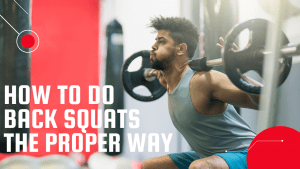What are assisted pull-ups and are they really effective?
Pull-ups are notorious for being a killer upper body exercise not only because they pack massive benefits but more so because they are on a whole other level of difficulty. But you know what they say: the greater the effort, the sweeter the reward.
There is no denying that pull-ups are worth including in your workout routine if you haven’t already, and while they may seem extremely challenging to perform, that doesn’t mean they are impossible to do.
There are ways by which you can gradually improve upper body strength to prepare yourself for pull-ups, and one of the most effective ways to do this is to use a variety of equipment for assistance.
What is an assisted pull-up?
The pull-up is an advanced upper body strengthening exercise that requires going against gravity to raise your body by holding onto a sturdy overhead bar with a firm grip to pull yourself up until your chin is above the bar.
The assisted pull-up is simply a pull-up variation that uses either a resistance band, a pull-up machine, or even a chair to make the upward phase of the exercise a bit less challenging. This pull-up version focuses more on building your upper body strength to get you ready for the real pull-ups.
The prime movers during a pull-up, whether it is assisted or not, are mainly the back muscles specifically the latissimus dorsi which runs from the mid-back to the armpits and shoulder blades, the trapezius which runs from the neck and extends to both shoulders, the thoracic erector spinae which runs along the thoracic spine, and the infraspinatus which is located on the shoulder blades and responsible for shoulder extension.
The core muscles also play an important role in stabilizing the torso to prevent you from swinging and using too much momentum to complete a rep.
But while the assisted variation can make pull-ups easier, you should still make sure to perform it with the correct form and movement to be effective. If you want to know how to do assisted pull-ups using different equipment, then keep scrolling.
How to do a regular pull-up
But before moving on to the different assisted pull-up variations, here is a simple step-by-step guide on how to perform a regular pull-up.
- Grab a sturdy overhead bar with an overhand grip and your hands shoulder-width apart, and then hang from the bar with your arms fully extended.
- Make sure that your shoulders, back, and core are engaged throughout the exercise.
- Raise your body in a controlled manner until your chin goes above the bar.
- Lower yourself in the same controlled manner until your arms are fully extended again.
- Repeat for at least 6 reps with proper form and movement at first, then increase your reps as you get stronger.
How to do an assisted pull-up
Using a resistance band
- Tie a resistance band around the pull-up bar to create a hanging loop.
- Hold on to the bar with an overhand grip and your hands shoulder-width apart.
- Put your knees or feet in the band. You may also do one knee or foot at a time, and perform pull-ups using one side first before moving on to the other.
- Lift your body slowly until your chin is above the bar.
- Lower your body in the same slow motion until you are back to the starting position.
- Repeat according to your desired number of reps.
Using a chair
- Place a chair underneath the pull-up bar.
- Grab the bar with an overhand grip and your hands shoulder-width apart.
- Slowly raise your body as high as you possibly can, but if it starts feeling uncomfortable when you go higher, press off the chair using one of your legs until your chin reaches the bar or above it.
- Go back to the starting position by slowly lowering yourself until your arms are fully extended.
- Repeat according to your desired number of reps then perform the exercise using your other leg.
Using a pull-up machine
- Begin by standing in front of a pull-up machine and grabbing the handles with a shoulder-width apart overhand grip.
- Place your feet on the foot bar (some machines have a padded knee rest instead) then slowly pull your body up until your chin is higher than your hands.
- Return to the starting position by lowering your body slowly until your arms are fully extended.
- Repeat according to your desired number of reps.
How to progress your pull-up
Want to know how you can determine if you are finally ready for a proper pull-up? Then master the following progressions first.
Dead hang
This progression exercise will train your grip strength and core body tension by simply gripping the bar firmly and hanging from it with arms fully extended. If you can hold this position for more than ten seconds, you may progress to flexed-arms hangs.
Flexed-arm hang
In this progression, you simply need to hold yourself at the top movement with your chin above the bar. If you can do this for more than ten seconds, it is time to move on to negative pull-ups.
Negative pull-ups
During this pull-up progression, you start at the top of the movement with your chin above the bar. Then, going against gravity, you slowly lower yourself until your arms are fully extended while keeping your back and arm muscles in constant tension as you go down.
Tips for better pull-ups
It is not enough that you know what to do; what is more important is to put into action the things that you do know. And once you have read these few simple but effective pull-up tips, make sure that you are actually doing them during your pull-up sesh.
Engage the glutes
While pull-ups are generally an upper body exercise, that’s not to say that you should just keep your lower body relaxed. Squeezing your glutes before you raise your body will recruit muscle fibers that will stabilize the hip flexors to minimize swaying.
Tighten all working muscles
To make it easier to manage your weight during the exercise, you need to brace your body to engage all the big and small stabilizing muscles. To do this, you need to retract your shoulders to bring your chest out and tighten your abdominal and gluteal muscles to stabilize your torso as you raise yourself.
Squeeze at the top
Once you have reached the top of the movement, hold that position for a few seconds to squeeze your back muscles before lowering yourself back to the starting position. Doing so will recruit more muscle fibers for improved strength and performance gains.
Benefits of doing pull-ups
Remember when we said that the greater the effort, the sweeter the reward? Well, here are just some of the rewards you can achieve once you have perfected pull-ups.
Improved shoulder and arm strength
Performing pull-ups regularly will not only build your back and upper body muscles but will also strengthen your arms and shoulders which can help you accomplish daily mundane tasks and any exercise with better ease.
Better grip
Aside from strengthening the arms and shoulders, pull-ups also build grip strength which is crucial when lifting weights. But not only is a strong grip good for weightlifting, it also helps you perform sports such as badminton, tennis, and rock climbing much better.
Improved overall health and fitness
Strength and resistance training exercises such as pull-ups can significantly improve your overall fitness. Since you are going against gravity by moving your entire body mass upward during a pull-up, this is going to give your body a massive strength boost and consequently a healthier body inside and out.
Constant challenge to the muscles
If you do the same exercises over and over again, your body can start to plateau after a while. You can avoid this by including challenging strength training exercises such as pull-ups into your routine. This is because constantly putting your muscles at work using difficult exercises strengthens them more effectively than working them out regularly with lighter exercises.
Pull-up mistakes to avoid
Regardless if you are doing pull-ups with assistance or not, the mistakes you are likely to commit are pretty much the same.
Incomplete range of motion
Remember that you are supposed to focus on the back muscles during pull-ups so doing partial reps will not fully lengthen the latissimus dorsi in between reps. Instead, this will recruit the arms more, making them do most of the work.
Elbows flaring out
If you want to truly develop and strengthen the latissimus dorsi, then you must keep your elbows fixed under the bar at all times. Such position also makes raising your body much easier, which means better rep quality and more stimulation of the back muscles.
Not retracting the shoulders
Learning to control your shoulder blades is the key to a successful pull-up. To do this, you should begin each rep by depressing and retracting your shoulders. This will tighten the back muscles and prevent you from recruiting your biceps to pull up.
Increasing difficulty too early
Before you add weights or start performing pull-ups faster, make sure that you are strong enough before doing any progression. A pull-up is already difficult enough as it is, so making it more difficult before you even master the move is only going to do more harm than good. This is why doing assisted pull-ups at first is ideal because they allow you to work on your form and movement while developing your strength until you are finally ready to perform a proper pull-up without assistance.



